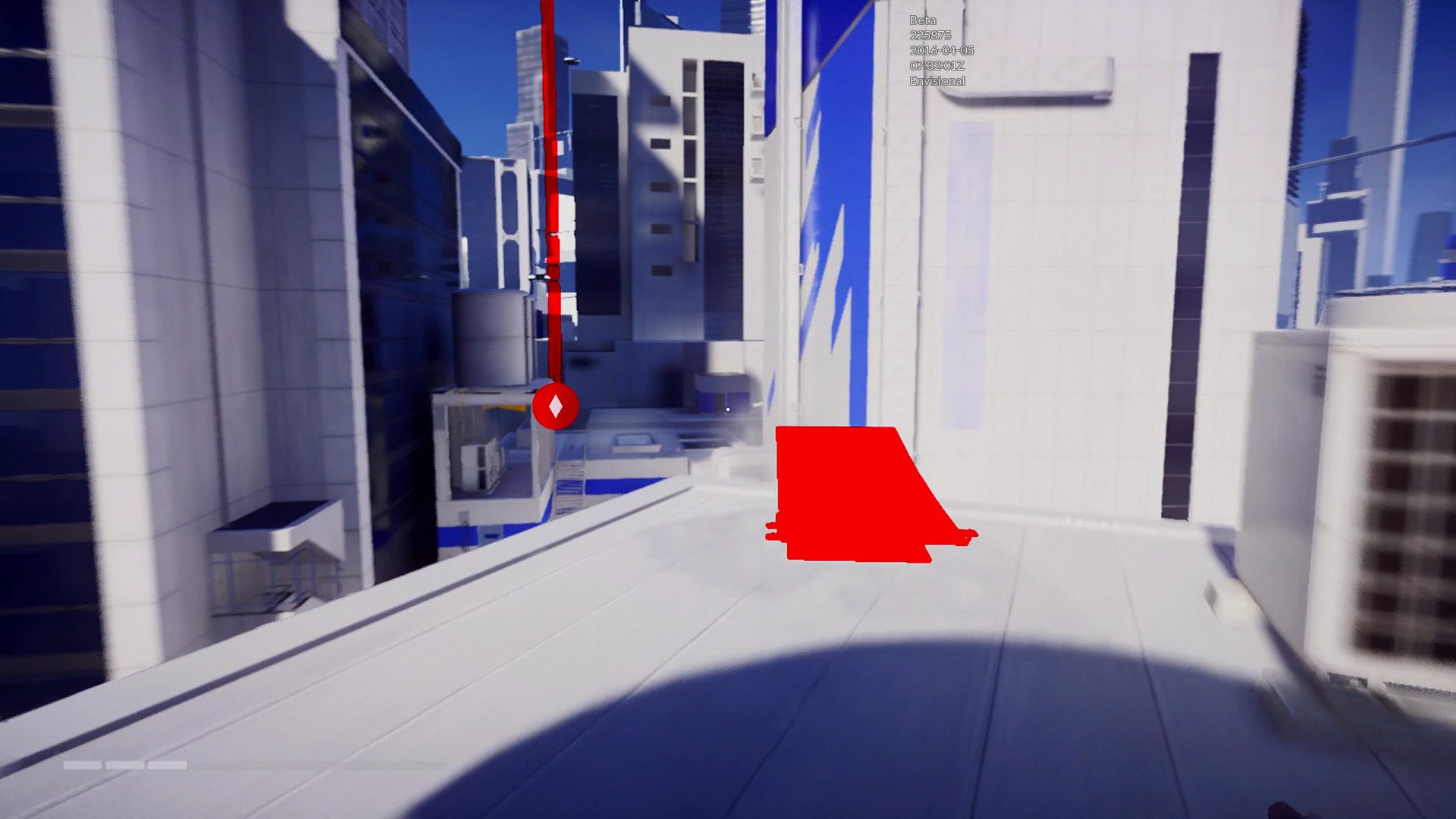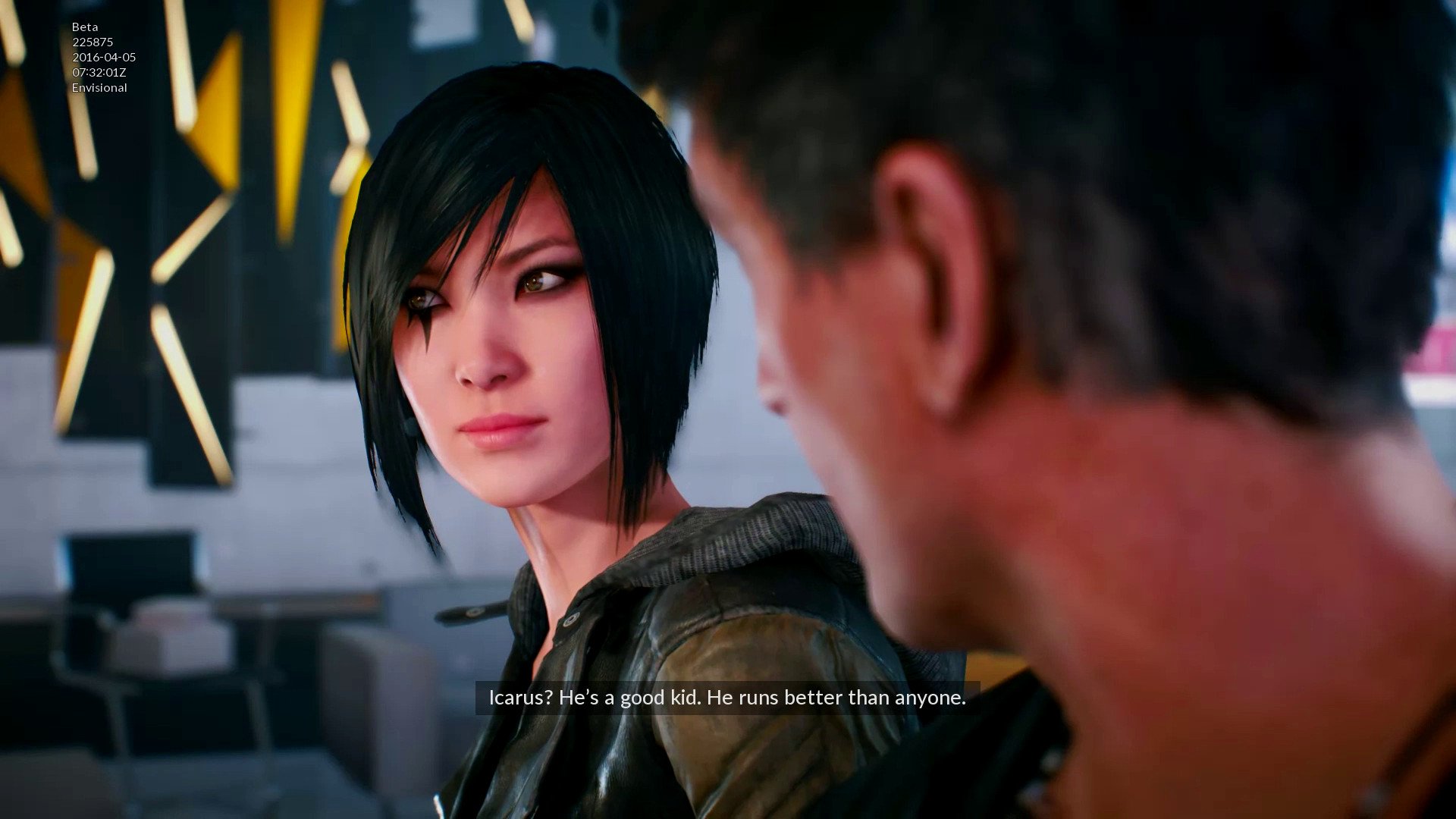Preview: Running across rooftops in the Mirror's Edge Catalyst beta
With the Mirror's Edge Catalyst closed beta currently underway, we spent a few hours exploring the City of Glass.


I've always had a soft spot for games with a unique premise, and especially those that deliver those concepts in an interesting way. This is a large factor in why the original Mirror's Edge has stayed so close to me, with alluring visuals, simplistic mechanics, and a living, breathing metropolis like no other.
On the surface, the first Mirror's Edge was a simple parkour-centric platformer, with a range of environmental puzzles for players to solve. Paired with solid gameplay foundations and ingenious level design, Mirror's Edge promoted fluid movement, with a drive to keep the player's momentum when traversing the game's expansive rooftops. The final product became more of an art form than a traditional EA game, with a heavily stylised design layered upon a polished set of game mechanics.
Eight years later, we're getting a follow-up to the cult classic, returning to Faith's roots in a reimagining of the game's world. Mirror's Edge Catalyst is a reboot of the franchise, rather than a direct sequel, which expands on the dystopian world introduced back in 2008.
Yesterday we gained access to Mirror's Edge Catalyst's closed beta, ahead of the game's public launch next month. The closed beta gives players access to a small portion of the full game, with two large story missions, a varied collection of side missions and restricted access to a portion of the open-world map.

"Manoeuvring around the rooftops feels truly intuitive"
Coming directly from the first game, you'll feel right at home in Mirror's Edge Catalyst, with the familiar responsive, tight controls — expected in a game that relies on complex amalgamations of button presses. Thanks to these firm controls, manoeuvring around the rooftops feels intuitive, with naturalness to each of the character's moves. This is massively helped by accurate visual feedback, which strengthens the mental connection between the Faith and the player.
Mirror's Edge Catalyst places an emphasis on building up player locomotion, and numerous design decisions have been made to accompany this. This first comes into play during the game's tutorial, which walks the player between common in-game obstacles and how to tackle them. This provides the foundations to take on the later puzzles, where these basic setups are strung together into intricate, more complex routines.

As an extension to player movement, the tutorial also places a heavy focus on the game's reworked combat mechanics. Maybe the most widespread critique of the first game was the lacklustre implementation of hostile attacks, giving the choice of simple punches and kicks, or use of enemy firearms. Aside from a poor execution on DICE's behalf, the weapons never really fitted the game's tone, stripping the player of all previously built-up momentum.
All the latest news, reviews, and guides for Windows and Xbox diehards.
Mirror's Edge Catalyst attempts to fix those mistakes by introducing a new range of combat moves that encourage player momentum, using this to empower the player. This is a blossomed version of the first Mirror's Edge's combat system, with new button combinations and environmental objects that add variety to enemy encounters.
The game puts you and your motion to use, to propel Faith into enemies as an offensive measure, using the surrounding environment as a crucial accompaniment. By building up speed Faith can be sprung from walls, poles and ledges, using her body as a lethal projectile on Kruger-Sec employees. The sound design is also notable, following each swing of a punch with a sharp crack.
"DICE's philosophy has changed with Mirror's Edge Catalyst"
As a result of these changes, I feel that DICE's philosophy has changed with Mirror's Edge Catalyst, by encouraging the player to engage enforcers, rather than escaping them. The newly introduced health bars reinforce this, drawing player focus to enemies on the map. I personally feel that these health bars clutter the screen with unwanted information, and contrast with the game's tone. To better fit the game's aesthetic a more natural approach would be preferable, with on-screen cues such as distinct body language and sounds to indicate the damage enemies sustain.
The reasoning behind these changes is clear when looking at what Mirror's Edge Catalyst is trying to achieve. After an eight-year absence, the game is a great entry point for new Mirror's Edge fans, and these new mechanics invite a wider, more diverse audience. With this revision of the Mirror's Edge universe, it's likely we can expect sequels later down the line, provided the demand is still out there after Catalyst.

Other common triple-A traits have been added to Mirror's Edge Catalyst, such as skill trees, which add a second path of progression alongside the main storyline. This is another instance of the franchise's modernisation, with branching skills for Faith's movement, combat skills, and gear.
Earlier this year when rumours of a skill tree arose, I worried about what Mirror's Edge Catalyst would become. Shoehorning in a skill tree can be a risky move, by breaking down the game's potential into small chunks, and spoon-feeding them to the player throughout the game. These feelings carried over to the beta, especially when I realised core moves from the first game, such as 'quick turn', were locked behind an upgrade system. After spending time with the skills system I'm relieved to see DICE has kept basic movements towards the earlier stages of the progression, which can be unlocked in the earlier hours of a playthrough. However, I still feel that the system doesn't mesh well with the game's mechanics, pointlessly limiting Faith's abilities to prolong personal progression.

A large focus of Mirror's Edge Catalyst is the reworked narrative, retracing Faith's origin story from an early age and the events that lead to her role as a Runner. The storyline in the first Mirror's Edge was close to non-existent, aside from some drawn-out animated cartoons that had little relevance to the game itself. These have now been replaced with in-engine cutscenes, which give the ability to accurately represent character's complexity and portray emotion during encounters.
The game begins with Faith escaping Kruger-Sec control after serving two years in prison, joining back up with her previous group of Runners. Upon arrival, she must adapt to how the city has changed and the rapidly escalating tension from the controlling corporations, known as the Conglomerate. While keeping tight control of all civilians, Kruger-Sec employees are told to silence those who rebel against the Conglomerate, ensuring the integrity of propaganda is constantly withheld. A majority of the civilians conform to these constraints, but growing factions aim to restore democracy in the City of Glass. The most prevalent group, 'Black November', aim to overthrow the corporations, and play a major role in Mirror's Edge Catalyst's narrative.
From what's available in the Mirror's Edge Catalyst beta, only a small portion of the game's storyline has been shown. It's interesting to see these character relationships building, but a firm opinion can't be given until we have access to the full game.

During my time with the beta, I experienced frequent loading issues, where certain assets or even entire buildings failed to appear in the world. This resulted in having to repeatedly jump off ledges, waiting for the city to populate with buildings to progress. This happens often enough where the game was unplayable, refusing to load in the required geometry after multiple attempts. Earlier this week, Electronic Arts announced that Mirror's Edge Catalyst will be released two weeks later than initially intended, in order to add required polish to the game. Hopefully, these issues are among those to be fixed prior to launch day.
From the time I've spent with Mirror's Edge Catalyst so far, the game is shaping up to a great experience for both newcomers and veterans of the franchise. The game retains many of its unique traits that made the original Mirror's Edge so enjoyable, while at the same time introducing new mechanics suited to the game's tone. As long as the game releases in a stable state in June, we may be looking at a successful revival of a once-dormant franchise.

Matt Brown was formerly a Windows Central's Senior Editor, Xbox & PC, at Future. Following over seven years of professional consumer technology and gaming coverage, he’s focused on the world of Microsoft's gaming efforts. You can follow him on Twitter @mattjbrown.
